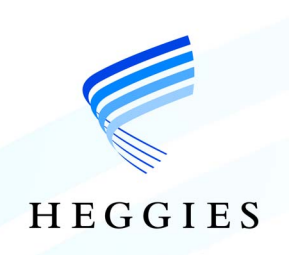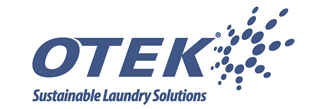
Final Draft
Ozone Monitoring
Hilton Laundry Facilities
George Street Sydney CBD NSW
PREPARED FOR
Ozone Technologies
Unit 35, 34-36 Ralph Street
Alexandria NSW 2015
24 AUGUST 2007
HEGGIES PTY LTD
ABN 29 001 584 612
Incorporating New Environment Graeme E. Harding & Associates Eric Taylor Acoustics
Heggies Pty Ltd
2 Lincoln Street Lane Cove NSW 2066 Australia
(PO Box 176 Lane Cove NSW 1595 Australia)
Telephone 61 2 9427 8100 Facsimile 61 2 9427 8200
Email sydney@heggies.com Web www.heggies.com
DISCLAIMER
Reports produced by Heggies Pty Ltd are prepared for a particular Client’s objective and are based on a specific scope, conditions and limitations, as agreed between Heggies and the Client. Information and/or report(s) prepared by Heggies may not be suitable for uses other than the original intended objective. No parties other than the Client should use any information and/or report(s) without first conferring with Heggies.
The information and/or report(s) prepared by Heggies should not be reproduced, presented or reviewed except in full. Before passing on to a third party any information and/or report(s) prepared by Heggies, the Client is to fully inform the third party of the objective and scope and any limitations and conditions, including any other relevant information which applies to the material prepared by Heggies. It is the responsibility of any third party to confirm whether information and/or report(s) prepared for others by Heggies are suitable for their specific objectives.

DOCUMENT CONTROL
| Reference | Status | Date | Prepared | Checked | Authorised |
| 10-5879 | Final Draft | 24 August 2007 | Nathan Aust | Nathan Redfern | Nathan Redfern |
| 10-5879 | Draft 1 | 24 August 2007 | Nathan Aust | Nathan Redfern | Nathan Redfern |
1 INTRODUCTION
1.1 Scope
Heggies Pty Ltd (Heggies) were commissioned by Kevin Nagle of Ozone Technologies Pty Ltd to undertake an assessment of indoor air in the Laundry Facilities located at the Hilton Hotel George Street, Sydney NSW. The assessment involved monitoring of ozone (O3) on 22 August 2007.
2 LIMITATIONS
Work is conducted in a conscientious and professional manner. The nature of the task however, and the likely disproportion between any damage or loss which might arise from the work and any report prepared as a result and the cost of our services is such that Heggies cannot guarantee that all issues of concern/contaminants have been identified. Thus while we carry out the work to the best of our ability, we totally exclude any loss or damages which may arise from services provided to Ozone Technologies Pty Ltd or other parties.
We are not building consultants, Heating Ventilation and Air Conditioning systems (HVAC) consultants or medical professionals. Medical opinion should be sought where appropriate on potential health risks arising from airborne contaminants and the treatment of any associated
illness.
We do not guarantee that the standards/guidelines used in comparison of the results or the work program conducted are suitable/adequate to identify all or any hazards or risks. This is because the work program is limited to monitoring/sampling a selection of contaminants in a number of locations only and does not cover all possible contaminants or hazardous materials that may be present; and there may not be recognised standards/guidelines available that are specifically suitable for application to the particular conditions and persons on site.
It is recommended that professional medical opinion be sought in regards to the suitability/adequacy of the work program conducted and the risks or hazards that the monitoring/sampling results may present to staff, visitors or other persons on the site.
All work conducted and reports produced by Heggies are prepared for a particular Client’s objective and are based on a specific scope, conditions and limitations, as agreed upon between Heggies and the Client. Information and/or report(s) prepared by Heggies may therefore not be suitable for any use other than the intended objective. No parties other than the Client should use any information and/or report(s) without first conferring with Heggies.
Before passing on to a third party any information and/or report(s) prepared by Heggies, the Client is to inform fully the third party of the objective and scope, and all limitations and conditions, including any other relevant information which applies to the information and/or report(s) prepared by Heggies.
It is the responsibility of third parties to investigate fully to their satisfaction if any information and/or report(s) prepared by Heggies is suitable for a specific objective. The report(s) and/or information produced by Heggies should not be reproduced and/or presented/reviewed except in full.
3 METHODOLOGY
Ozone (O3) concentration measurements were taken by use of an AeroQual Ozone Monitor over the course of approximately one hour during regularly work conditions and operations. The results have been compared to health-based occupational air quality standards provided by the Australian Safety and Compensational Council (ASCC) (formerly NOHSC).
4 RESULTS
The results of the O3 monitoring are presented in Table 4-1below.
Table 4-1 – Ozone Monitoring Results
| Location | Monitoring Time | Maximum O3 (ppm) |
| Background: George Street(door) | 10:30 | 0.019 |
| Background: George Street(curbside) | 10:32 | 0.023 |
| Behind 70kg Milnoz Washing Machine | 10:45 | 0.019 |
| Workbench in front of 70kg Milnoz | 10:48 | 0.016 |
| Machine to right of 70kg Milnoz | 10:55 | 0.011 |
| Folder machine | 11:00 | 0.016 |
| Workbench near ironing area | 11:05 | 0.013 |
| Ironing area | 11:10 | 0.013 |
| Unloading of 70kg Milnoz | 11:25 | 0.020 |
ppm = parts per million
5 DISCUSSION OF RESULTS
The ASCC exposure standard for O3 is 0.1ppm for an 8-hour time weighted average (TWA). The maximum concentration of O3 concentrations measured for all areas were well below the ASCC health-based standard.
6 CONCLUSIONS
A simple comparison of an air measurement and a health benchmark can be thought of as a “screening” exercise, that is, the assessor is screening for possible problems. If a majority of the concentrations observed are much less then the benchmark then it would be appropriate to conclude that a health impact is unlikely.
As all O3 concentrations observed during the monitoring period were below the ASCC standard it can be concluded that the risk to health of employees working within the area monitored due to O3 exposure are negligible.
